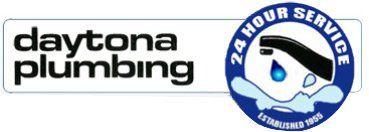Plumbing Design Considerations for Employee Restrooms
Designing the plumbing for a commercial building's employee restroom involves a thoughtful approach that balances both functionality and compliance with local regulations. This process is crucial for business owners who aim to create a comfortable and efficient space for their employees. Proper planning ensures the restroom is not only sanitary and reliable but also accessible and aesthetically pleasing.
Understanding Local Plumbing Code Requirements
The cornerstone of any plumbing design is adherence to local plumbing codes. These regulations dictate everything from the type of pipes used to the specific fixtures that must be installed. Obtaining the services of licensed plumbers ensures that your design meets all necessary standards, avoiding costly adjustments later on. Local codes will typically specify requirements for fixture counts, drainage systems, and venting mechanisms to promote safety and hygiene.
Layout and Space Utilization
Effective space utilization is a pivotal element in restroom design. The layout must accommodate high traffic while still providing privacy and comfort. Consider the number of employees and peak usage times when planning the number of stalls, sinks, and urinals. Placing fixtures strategically can streamline traffic flow and reduce waiting times. Additionally, providing adequate square footage is essential for compliance with the Americans with Disabilities Act (ADA), ensuring the restroom is accessible to all employees.
High-Quality Fixtures and Materials
Choosing high-quality fixtures and materials is indispensable for long-term durability and performance. Commercial restrooms experience considerable wear and tear, so investing in robust, easy-to-clean materials will save on maintenance costs and extend the life of the restroom. Sensor-activated faucets and flush valves can enhance hygiene and reduce water use, complementing both the functionality and environmental responsibility of the design.
Efficient Plumbing Fixtures
Water efficiency plays a significant role in both cost management and environmental conservation. Low-flow toilets, urinals, and faucets are designed to minimize water use without compromising performance. Employing commercial plumbing services to identify and install the most efficient fixtures can lead to substantial savings on water bills over time. Furthermore, incorporating touchless technology can further enhance both the water efficiency and sanitary conditions of the restroom.
Ventilation and Odor Control
Proper ventilation is another critical factor in restroom design. Odor control and air quality directly affect the comfort and satisfaction of the users. Effective ventilation systems help mitigate odors and maintain a fresh environment, which is particularly important in restrooms with high user traffic. Incorporating exhaust fans and regularly maintaining HVAC systems contributes to a healthier, more pleasant restroom experience.
Drainage and Waste Management
Ensuring effective drainage and waste management is essential for maintaining a hygienic restroom environment. The plumbing design should include properly sloped floors and strategically placed drains to prevent water pooling and potential slip hazards. Furthermore, employing grease interceptors and waste traps can help prevent clogs and maintain smooth operation. Regular maintenance by skilled plumbers is vital to keep the drainage system functioning efficiently and avoid unsanitary conditions.
Accessibility and Compliance
Designing an accessible restroom is not just about compliance with legal standards; it’s a reflection of a business’s commitment to inclusivity. The ADA sets forth guidelines that detail the minimum requirements for restroom accessibility. These include appropriate stall dimensions, handrails, and accessible sinks. Ensuring your design meets these standards often requires consultations with commercial plumbing services to verify that all necessary features are correctly implemented.
Facility Maintenance and Upkeep
Long-term maintenance is a significant consideration in the planning stages of your restroom design. Establishing a regular maintenance schedule with reliable plumbers can prevent small issues from escalating into costly repairs. Employing durable materials and high-quality fixtures will also reduce the frequency of required maintenance. Regular inspections and prompt repairs are essential for keeping the restroom in optimal condition, thus ensuring employee satisfaction and reducing downtime due to plumbing issues.
Sustainable Practices
Incorporating sustainable practices in your restroom design helps promote environmental responsibility and can also result in long-term financial benefits. Consider recycling water systems or installing rainwater harvesting mechanisms for non-potable uses. Engage commercial plumbing services that are familiar with green plumbing techniques to ensure that your design is both sustainable and compliant with modern environmental standards.
An effectively designed employee restroom serves as a testament to a business's commitment to its workforce's well-being and its operational efficiency. Engaging experienced plumbers at every stage of the design and maintenance process will ensure the successful implementation of these essential considerations. If you require commercial plumbing services, work with us at Daytona Plumbing.






